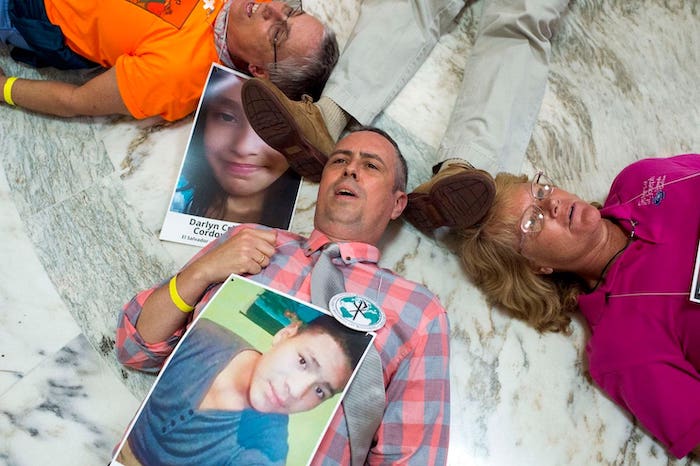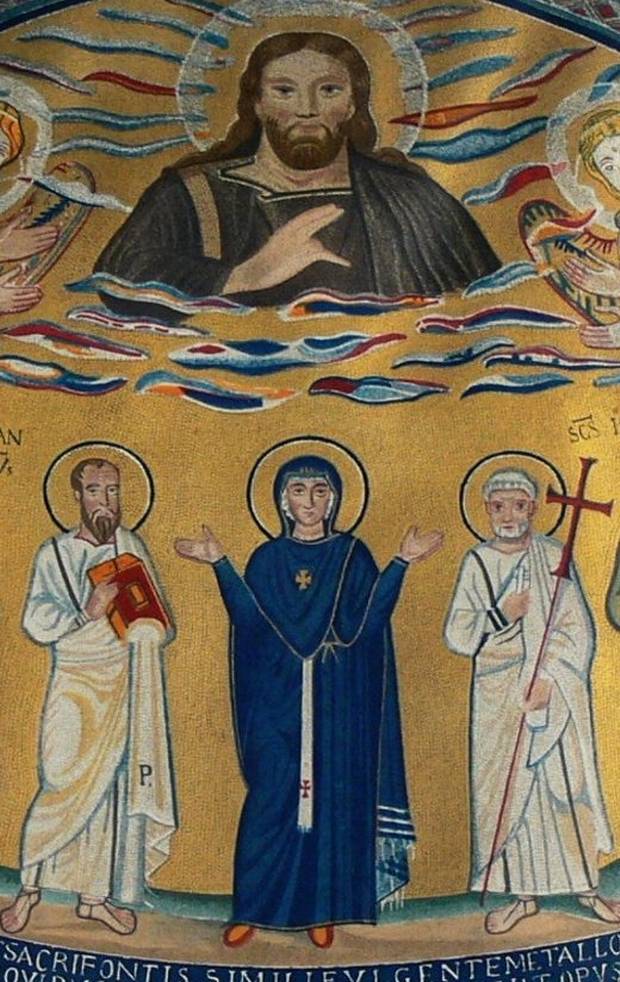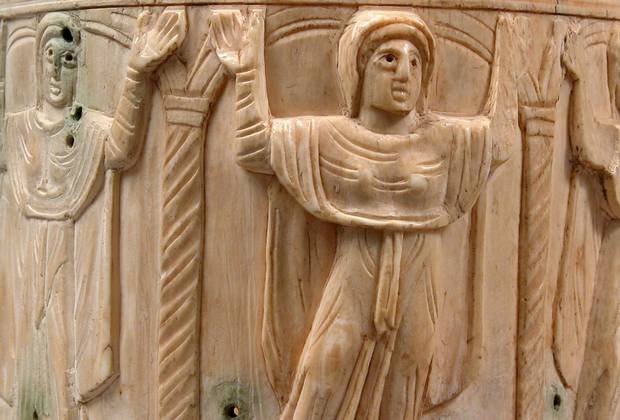
The Lord’s Prayer filled the marble dome of the Russell Senate Office Building on Thursday as 70 Catholic sisters, clergy and parishioners were led away in handcuffs.
“Forgive us our trespasses,” the demonstrators recited, “as we forgive those who trespass against us.”
On a day they dubbed the “Catholic Day of Action,” hundreds of Catholics gathered outside the Capitol to protest the Trump administration’s immigration policies and its treatment of migrants.
“We hope that by being here and putting our bodies on the line, we can give people, members of Congress, courage to do the right thing,” said Sister Marge Clark, from the Sisters of Charity of the Blessed Virgin Mary. “It’s important to go beyond words, to put your body where your words are, where your beliefs are.”
In their hands and fastened to their bodies, demonstrators carried photographs of migrant children who died in federal custody into the Russell building, where more than 30 senators have offices. As five protesters lay on the floor of the rotunda to make the shape of a cross with their bodies, the group recited the children’s names:
“Darlyn,” protesters chanted in unison. “Jakelin. Felipe. Juan. Wilmer. Carlos.”
Thursday’s demonstration was the second protest this week in which people of faith decried Immigration and Customs Enforcement and called for an end to the federal practice of detaining migrants at crowded detention centers along the U.S.-Mexico border.
Ten Jewish demonstrators were arrested Tuesday for refusing to leave the lobby of ICE headquarters in Southwest Washington. More than 100 others locked arms and formed barriers around the building’s doors and garage, disrupting the agency’s daily operations.
Thursday’s protest, which called for an end to child detention, was organized by a coalition of more than 15 Catholic groups, including the Sisters of Mercy, Faith in Action and the Leadership Conference of Women Religious.
“We are here today because of our faith. The gospel compels us to act,” Sister Ann Scholz, associate director for LCWR’s social mission, told the crowd. “We are outraged at the horrific treatment of families and especially children. The inhumane treatment of children being done in our name must stop.”
Though Pope Francis and the U.S. Conference of Catholic Bishops have long affirmed their support for migrants and refugees, Catholic voters are split on the issue of immigration, according to surveys conducted earlier this year by the Pew Research Center.
Catholic Democrats are more likely than Catholic Republicans to view immigration as a boon rather than a burden to the United States — 86 percent to 47 percent — and are more likely to oppose expanding a wall along the U.S.-Mexico border.
“We can and must remain a country that provides refuge for children and families fleeing violence, persecution and acute poverty,” the Conference of Catholic Bishops wrote in a statement last month. “All people, regardless of their country of origin or legal status, are made in the image of God and should be treated with dignity and respect.”
Claribel Guzman, an undocumented immigrant from El Salvador, bounced her 17-month-old daughter in her arms Thursday as demonstrators read aloud the words of migrant children detained at federal facilities.
Guzman, afraid of being deported to a country she fears and of being separated from her child, said she has been weighing her options. Maybe, she said, she would seek sanctuary at a local church.
Later, as Franciscan brothers in brown robes were arrested alongside Catholic sisters, Guzman looked on, her head shaking slightly.
“This is my fight now, for my daughter,” she said in Spanish. “It’s very frustrating, very difficult. I am alone here. But in this moment, seeing people like this helps me.”
The demonstration came less than a week after President Trump promised a crush of immigration raids in cities around the country. Though they failed to materialize Sunday as the president promised — Trump said he wanted agents “to take people out and take them back to their countries” — several sisters who work with immigrants said they have seen a lingering fear grip their communities.
“It’s so much worse now. So much worse than we’ve ever seen it, and every day my stomach sinks when something new comes out,” said Sister JoAnn Persch, 85, a Chicago nun with the Sisters of Mercy. “But you know what I’ve learned? I’ve learned that nuns have power. And that’s why we’re here.”
Persch and Sister Pat Murphy, 90, began working with immigrants in 1990, when they took over Su Casa, a Chicago refuge for Central American women, children and torture survivors. In 2007, they began sitting vigil outside the Broadview Detention Center, an ICE facility near Chicago that is often a last stop before immigrants are sent back to their home countries.

They return every Friday — no matter the weather — to pray the rosary.
“Those little children and their mothers and fathers coming across the border, those who are here in the United States, are maligned, called names. It’s rude, crude, disgusting,” Murphy said. “The climate in the country now is very sad, and it’s scary. It’s a scary time.”
The sisters were among about 50 nuns who participated in Thursday’s act of civil disobedience.
As police officers led the last group away, hands zip-tied behind their backs, the demonstrators sang a hymn.
All that remained were photographs of the deceased children, scattered across the Capitol’s hard, cold ground.
Complete Article ↪HERE↩!






